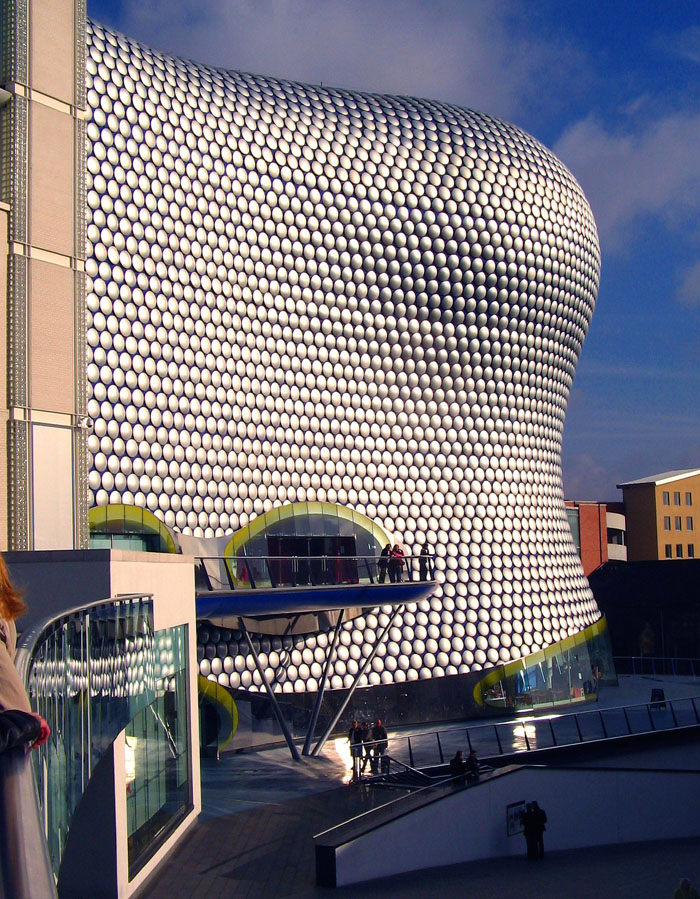
Birmingham Central Library is the main public library in
The main body containing the music library, collections, and reference library is located on several floors over Paradise Forum, with the main entrance and lending section in
History and earlier building
The first municipal library occupied the northern half of a site on
The library was rebuilt on the same site by Martin & Chamberlain and opened in 1882. As the number of books increased, the Council approved the creation of a replacement library in 1938, but it was not until the late 1960s, and the need for the new
Collections
Special features include the Boulton and Watt collection, the Bournville Village Trust Archive and the Railway and Canal Historical Society Library.
The specialist Shakespeare Memorial Room was designed in 1882 by John Henry Chamberlain for the previous Central Library. It contained several early William Shakespeare folio editions. When the old building was demolished in 1974 Chamberlain's room was dismantled and fitted into the new concrete shell of the new library. It is in an extension of the main building alongside the
Architecture
The 1974 Brutalist building designed by John Madin (the third library on the site), an inverted ziggurat similar to the earlier Boston City Hall, has famously been described by Prince Charles as "looking more like a place for burning books, than keeping them". Nonetheless, the Twentieth Century Society is campaigning for its retention. Paradise Forum, containing shops and bars, was created in 1988 when the windy space under the hollow main building was enclosed and the pedestrian access to Centenary Square improved.
Library of Birmingham
A replacement library, to be called the "Library of Birmingham", on a new campus in the city centre's "Eastside" was planned. and Birmingham City Council commissioned the Richard Rogers Partnership to develop the concept designs. However, for financial reasons this plan has been shelved. The Council's current suggestion is that the Library be split between a new building built between the Rep theatre and Baskerville House at Centenary Square, which as of January 2006 is a public car park (to house the main lending library) and a building at Millennium Point in "Eastside" (to house the archives and special collections).
In August 2006, the Council confirmed the area between the Rep and Baskerville House as the future site for the library. Capita Symonds has been appointed as Project Managers for the Library of Birmingham. The council's intention is to create a "world class" landmark civic building in Centenary Square.
However, it is possible that two-sites idea will be scrapped and the archives and special collections will move to the site at Centenary Square.





